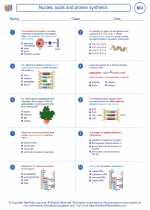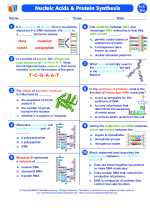Crystallization
Crystallization is the process of forming a solid crystalline structure from a liquid or gas. This process occurs when the atoms or molecules of a substance arrange themselves in a specific, repeating pattern, resulting in the formation of crystals.
Types of Crystallization
1. Evaporative Crystallization: This type of crystallization occurs when a solution is heated, causing the solvent to evaporate and leaving behind the solute in a crystalline form.
2. Cooling Crystallization: When a solution is cooled, the solute may become insoluble and form crystals as the temperature decreases.
3. Supersaturation Crystallization: This occurs when a solution becomes supersaturated with the solute, leading to the spontaneous formation of crystals.
Applications of Crystallization
Crystallization has several important applications in various fields:
- Chemical Industry: Crystallization is used to purify substances and produce high-quality chemicals.
- Pharmaceuticals: It is utilized in the production of pharmaceutical compounds and drugs.
- Food Industry: Crystallization is employed to refine sugar and salt, as well as in the production of chocolate and other confectionery.
- Material Science: It plays a crucial role in the production of semiconductor materials and other advanced materials.
Study Guide for Crystallization
To understand crystallization thoroughly, students should focus on the following key points:
- Understanding the molecular structure of solids and the concept of repeating units in crystals.
- Knowing the factors that influence the crystallization process, such as temperature, concentration, and pressure.
- Learning about different methods of crystallization, including evaporative, cooling, and supersaturation crystallization.
- Exploring the applications of crystallization in various industries and scientific fields.
- Practicing the techniques and calculations involved in crystallization processes, such as determining solubility and concentration.
By mastering these concepts and applications, students can develop a strong understanding of crystallization and its significance in the world of chemistry and material science.
.◂Biology Worksheets and Study Guides High School. Nucleic acids and protein synthesis

 Worksheet/Answer key
Worksheet/Answer key
 Worksheet/Answer key
Worksheet/Answer key
 Worksheet/Answer key
Worksheet/Answer key
 Vocabulary/Answer key
Vocabulary/Answer key
 Vocabulary/Answer key
Vocabulary/Answer key
 Vocabulary/Answer key
Vocabulary/Answer key
